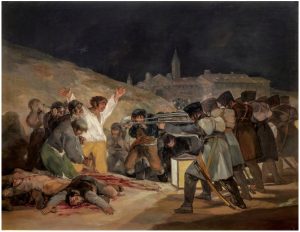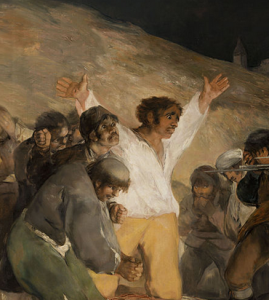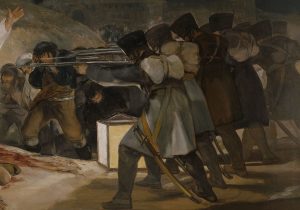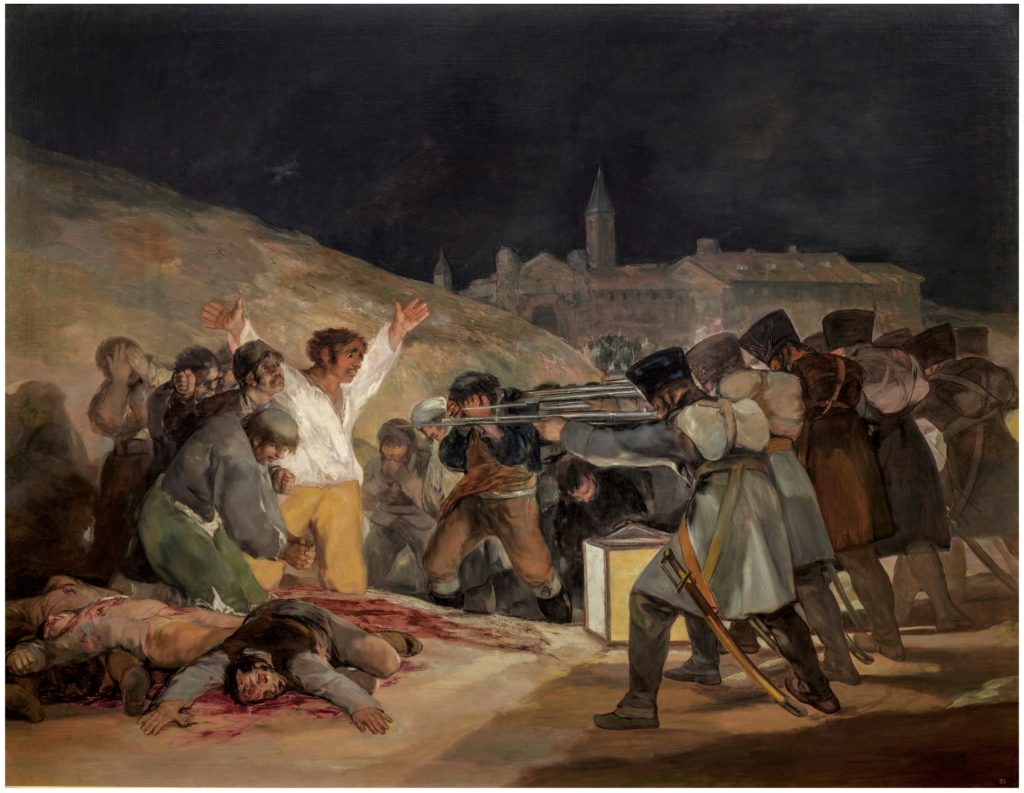Vaishnavi Srivastava
May 3, On This Day
Groundbreaking art of war
Every once in a while we come across a date that is of the utmost significance when it comes to history. May 3rd is one such day, as based on this day is an infamous painting by the legendary Francisco Goya. It happened two centuries ago. It’s like deja vu! (note: the author is not aware of the actual meaning behind the phrase “deja vu” and often misuses it instead of bothering to look it up.)
‘The Third of May 1808’ (also known as El tres de mayo de 1808 en Madrid) by Spanish painter Francisco Goya sought to commemorate Spanish resistance to Napoleon’s armies during the occupation in the Peninsular War. It was completed in 1814 and is today featured at the Museo del Prado in Madrid. The painting is often called a groundbreaking, archetypal image of the horrors of war, and marked a clear break from artistic conventions of the time, with no distinct precedent. It draws on sources from both high and popular art and diverges from traditions of Christian art and traditional depictions of war till that time. Art historians called it “revolutionary in style, subject, and intention”.

Courtesy: Museo del Prado.
The painting was created in the era of Romanticism. The movement sought to delve deep into the deeper meanings and emotions of events especially those pertaining to the political and social aspects. The war depicted in the painting i.e. the Peninsular War was fought from 1808 through 1814. The war was between Portugal, Spain and Britain against the French. France was led by Napoleon Bonaparte, wherein his men infiltrated Spain, overthrew the Monarchy and made Joseph Bonaparte the king of the country.
“The population of Madrid, led astray, has given itself to revolt and murder. French blood has flowed. It demands vengeance. All those arrested in the uprising, arms in hand, will be shot”
– Joachim Murat (French Commander)
The uprisings held by the Spanish people resulted in massacres killing numerous by the French Army. These events, specifically the Dos de Mayo Uprising, are then displayed by Goya in his paintings titled, “The Second of May 1808″ and ” The Third of May 1808″.

Courtesy: Medium
The event depicted in the painting instilled with blood and emotions is said to take place at dawn. The painting is largely divided into two distinct groups. The French troops are depicted in their army attire, facing their backs to the canvas with enormous and powerful rifles targeted towards the unarmed protestors. Meanwhile, the group being targeted has a central Christ-like figure dressed in white surrounding others who are to be shot in line – some are depicted in fear while some pertain to expressions of bravery, although all appear hopeless. Moreover, there are several dead bodies with the depiction of blood which further adds to the aggravating emotions of the painting.
The colours in the painting are a contrast of mostly dark colours followed by lighter colours that are owed to the light source of the lanterns. The sharp displays of the dividing lines of light on the protestors and dark on the troops portray very masterfully the dynamics of the two groups in the painting. Goya uses the Chiaroscuro technique in this artwork.

Courtesy: Khan Academy.
The painting is living proof of Goya’s prevalent anti-war stance. He was one of the leading figures of the Modern era. His painting depicting the Spanish Uprising, later on, influenced legendary figures such as “The Execution of Emperor Maximilian” by Manet and “Guernica” and “Massacre in Korea” by Picasso. Moreover, they also influenced contemporary artists such as Ballagh’s depiction of the “Bloody Sunday” massacre in Derry. Hence, the paintings aged to become a booster dose to artists and an encouragement to make art more political.






